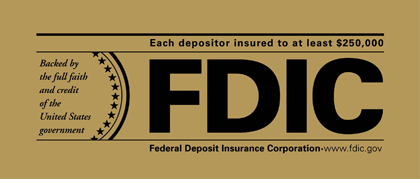Manage Your Entire Nest-Egg with Portfolio Sizing
Portfolio sizing is the process you use to figure how much money you want in your banking and investment accounts.The word "portfolio" is just a general term used to describe a group of assets.
You might consider a 401k your retirement portfolio.
Or, you might consider your 401k, Bank of America savings account, and E*Trade investing account as your investment portfolio.
Either way, managing the total amount of money in your account(s) is called portfolio sizing.
At first, you'll just be working with your current account balance (the amount you have already deposited). Your "management" will simply be how often and how much you deposit into that account.
As you increase your skill at safe investing, you might start opening new accounts to use different investing strategies or to buy special types of investments.
You may think that the bigger your portfolio, the better - how can more money be a bad thing? Unfortunately, that is not always true. Growing the size of your accounts is definitely the right direction, but not when you violates any of the 10 principles of safe investing.
In particular, Principle #2 (always protect against losses) and #7 (constantly pursue ways to reduce costs) come to mind.
In both cases, consider the following factors when you're evaluating the size of your portfolio:
- Minimum Balance Requirements (#7)
- Deposit Insurance (#2)
- Investment Account Protection (#2)
Minimum Balance Requirements
Some banks and investment brokers charge a fee if your average balance for a month drops below a certain dollar amount. More than likely, these fees are not calculated in a straightforward way and you won't know about them until AFTER they appear on your monthly statement.You could say that one aspect of portfolio sizing is as easy as making sure your account balance is ALWAYS above the minimum. It's also the only surefire way to avoid minimum balance fees.
When you're figuring out how much money to deposit in an account, keep in mind that your portfolio size will move up and down over the year. Size your account so that one large loss or withdrawal will not put you below this limit.

Safe Investing Tip:
Your minimum portfolio size may be defined by your investment broker, depending on the type of trading you plan to do.
Deposit Insurance (FDIC)
For accounts that you open with a bank (non-investment), the Federal Deposit Insurance Corporation (FDIC) protects your money in the event that your financial institution goes bankrupt.The advantage of this insurance is that you don't need to do anything. Just make sure that your bank is part of the insurance program (Check out the FDIC's Bank Finder - https://research.fdic.gov/bankfind/).
Or if you prefer the brick and mortar approach, look for this sign:

If your bank is enrolled in the program, then so are your deposit accounts, including savings/checking accounts, money market accounts, and certificates of deposit(CDs).
Recently, the FDIC increased their coverage limits (through December 31, 2013). You can find more information about these increased limits at FDIC.gov or by clicking here (http://www.fdic.gov/deposit/deposits/index.html.)
The FDIC also created an "insurance estimator" that can quickly tell you how much of your money is covered. Click here to open the tool in a new window.
FDIC insurance does NOT cover stocks, bonds, mutual funds, life insurance policies, annuities or other investment vehicles.
Investment Account Protection
When sizing your investment portfolios, it is important to know if your accounts are protected by the Securities Investor Protection Corporation (SIPC).The SIPC was created to pay back account holders if their investment broker goes into bankruptcy.
The SIPC is NOT the same as the FDIC. The government does not "insure" investment accounts, and only certain financial assets can be "claimed" (cash, stocks, and bonds).
Basically, the SIPC is a reserve fund that can be used to reimburse claims up to a maximum of $500,000 (including a maximum of $100,000 for cash holdings).
If you decide to put more than $500,000 into an investment account, you may not be reimbursed for that extra money. If you file a claim for more than $500,000, the SIPC can only provide you reimbursement using the funds it is able to recover from the bankrupt brokerage.


